Creating A Killer Content Marketing Strategy In 2024
Author: Nameera Iqbal
Published On: 16-06-21
Last Updated on: 28-11-23
Estimated reading time: 14 minutes
An eye-catching headline, an educative blog post, and an interactive social media post. These are all content marketing examples that have proven effective in allowing businesses to see six times more conversions.
With the changing times, traditional marketing tactics have gone out the door, and content marketing is the new boss in town! Valuable and relevant content will allow you to better engage with your target audience and improve your brand reputation. However, this only works when you know how to leverage content to market a product or a service.
Keep reading to crack the code for the ultimate content marketing strategy that’ll earn you more traffic, engagement, and conversions!
What Is Content Marketing And How It Works?
Here’s a basic definition of content marketing given by the Content Marketing Institute.
“A strategic marketing approach focused on creating and distributing valuable, relevant and consistent content to attract and retain a clearly-defined audience — and, ultimately, to drive profitable customer action.”
Let’s expand on this.
While high quality and valuable information are at its heart, content marketing is much more than just a piece of content. In addition to that, it is a long-term strategy put into play that allows businesses to help you build a strong customer relationship from the ground up!
Compared to traditional marketing methods like product advertisements on TVs, you use content marketing actually shows that you care about customers.
When you are consistently releasing quality content that is of actual use to the customers, the audience forms a bond with your company. This loyalty is what cements the relationship to trigger sales enablement. Moreover, customers will not just buy your product but actively seek out your services over competitors.
Difference Between Content Marketing Strategy, Content Strategy, And Content Plan
Before getting into the specifics of content marketing, you should know the difference between three overlapping concepts within this field. These are – content marketing strategy, content strategy, and content plan.
Content Marketing Strategy
Content marketing strategy involves thinking about the “why” behind the content. This refers to why you are creating content, who is the target audience, how you are helping them with your content, and why. Therefore, this strategy is designed to increase sales and thereby customers with lowered costs.
Content Strategy
The content strategy goes beyond content marketing strategy, bringing its focus back to the content itself. It essentially refers to the strategic approach taken in creating and publishing great content useful to the audience.
Content Plan
Once content marketers have decided on a content strategy, it is time to plan how to execute it. Therefore, details like what topics you will cover with your content, what call to action will be included, and where and when you will share, will be included in this plan.
Do Startups Need Content Marketing?
It’s hard to imagine it now, but there was a time in 2006 when HubSpot was a startup that was still in the stage of building itself. They earned their spot as one of the top CRM software companies by gaining attention through their original content. Besides, the company generated 75% leads through its content.
This success story is a great segway into why content is a crucial component of every startup’s growth strategy.
How Do Startups Actually Get Their Content Marketing To Work?
Startups are typically strapped for cash. Content creation doesn’t take a lot of money or a huge team. Moreover, it’s an awesome way to quickly acquire some traction on your website and build brand awareness.
That’s why Content Marketing Institute found 88% of B2B companies using content marketing. However, the report also found that 68% of the companies do not have a documented content strategy.
Without a clear sense of direction of where you are going with the content, your content will not have any impact. You can’t expect people to come if you simply create content and that’s it. A documented content marketing strategy helps create a path for how to scale your business! You start working on content amplification techniques or strategies to attract the right traffic.
Content Marketing Institute has found that those with a documented strategy –
- Have content marketing tactics that are more effective
- Feel more prepared to handle every aspect of content marketing
- Higher returns on their marketing budget assigned to content marketing
What Is Included In Content Marketing Strategy?
Every company wants to accomplish a different goal and vary in its template for its content marketing strategy. Nevertheless, every template will revolve around the four core elements of content marketing listed below.
Brand Story/Positioning
Consistency is key here.
A clearly defined brand position will help you communicate the right message and content. A strong brand story will make way for a great user experience, market differentiation and shape the brand’s evolution.
To find the right brand position, ask yourself questions like –
- Who are the existing and potential customers in the market?
- What is the brand personality?
- How should I differentiate my brand?
- What are the top competitors doing to reach the market?
Media Value Proposition
Your content is a way to show existing and potential customers why you are worth their time and money.
Why should the user follow your content channel instead of the competitors?
To answer this question, you must first identify what your target audience desires. This includes the favorite content type and current content resources used.
You should also research all content publishers within your industry. In doing so, you can create a solid strategy for developing owned media.
Business Case
Time to make your case!
You are looking to achieve two main goals with great content – attract readers and drive business growth. By formulating a business case, you can identify the risks, benefits, and costs of achieving your content marketing vision.
When you are clear and confident about your strategy, decision-makers at the company also follow suit and support your marketing strategy!
Business Plan
The final step will combine all your content marketing efforts to form a strategic plan. This plan will cover every detail regarding your content plan like –
- Describe the target audience and their needs.
- Content channels for delivering great content.
- Content creation process
- Measuring the results
It will also help you map out the buyer’s journey to get closer to achieving your goals.
Step-By-Step Plan For Creating A Content Marketing Strategy
Now let’s get into the actual steps involved in designing a content marketing strategy.
Eight steps are laid out below that will provide you with a complete content marketing and content strategy.
Step 1 – Define Your Goals
Defining your goals is a pointer that will come up in this article time and again – that’s how important it is!
Clear goals will dictate how to go about your plan. So start with the long-term goal like the company vision and mission. Then move on to short-term operational goals.
Keep in mind your content marketing goals have to be aligned with your overall business goals at all times. For this, you need to be in the right mindset.
The CLEAR Framework
This framework is something that many rapidly growing companies adopt for the changing business environment. It allows you to evaluate the value of your objectives based on whether they fit the right characteristics.
The CLEAR acronym stands for –
- Collaborative – goals encourage teamwork
- Limited – goals have a fixed duration and scope
- Emotional – goals inspire the team to work
- Appreciable – goals can be broken down to smaller objectives
- Refinable – goals are repurposed according to changing circumstances and needs
This framework offers more flexibility than the traditional SMART mindset (Specific, Measurable, Achievable, Relevant, and Time-Bound).
Step 2 – Create A Buyer Persona
You draw the target market with your content by understanding their lifestyle, pain points, interests, and so on. To do so, you need to make buyer personas.
Content marketers need to remember that a single buyer persona is not enough. Moreover, you are not just reaching out to existing buyers, but potential leads.
There are four tiers of users that you will be attracting.
- Audience – interested in your area of expertise
- Followers – follow and love your brand’s work
- Buyers – interested in buying your product
- Advocates – recommend your brand
So be sure to create a persona for each category.
Step 3 – Auditing Your Content
You may already have some content published on your website. So take the time to analyze and understand the state of your existing content.
Running a content audit helps you figure out what you must do differently.
What type of content is attracting the most engagement or traffic on your website? What is resulting in a higher or lower bounce rate on the website? How can you improve the content, and what should you prioritize less?
All of these questions will be answered here.
Step 4 – Analyze Your Content Production Process
Before actually making the content, you should determine the type of content. This is not just referring to the format but also the purpose each content piece will serve.
You have to ensure that your overall content covers every stage in the customer journey. By showing your support at every stage, you can develop a strong relationship with the customers.
If you didn’t know already, the stages are –
- Awareness stage – It is centered around the questions or topics that interest the lead, educating or entertaining them.
- Consideration stage – Help the prospect understand why and how they can solve their pain points.
- Decision stage – Here, you need to show how you have helped others. Reviews, case studies, and product or service analysis will be useful.
- Retention stage – Predict customer questions and create information for the various products and services you provide.
- Advocacy stage – Pieces under this stage should show the audience your work ethics and values to transform them into advocates and lovers of the brand!
Step 5 – Diversify Content
Now comes the part of producing the actual content!
Combine several types of content pieces to attract diverse groups of people. With so many topic generator tools like HubSpot, Blog About, and Feedly, you can get plenty of ideas.
Here are some other tips to keep in mind.
Use User-Generated Content
Sharing content given by your audience will improve your reputation within the community. You can share customer reviews, photos, comments, and so on.
Make It SEO-Friendly
Optimize your website articles to make sure they meet the SEO standards to earn a high search engine ranking. After all, 53% of website traffic is organic!
Repurpose Your Content
Repurpose a content piece into different formats like infographics, videos, and social media posts.
Step 6 – Plan Content Distribution
- Next, you need to publish the content on relevant channels most visited by your target market. This may be social media platforms like Instagram, YouTube, or your website itself.
You should look at providing an omnichannel user experience. This takes place when you are using user-generated, paid ads and owned media all at once.
You could automate the publishing of your content with the help of content management tools. In fact, these tools or digital systems help you keep track of your content calendar and library to lessen your burden.
Step 7 – Analyze Content Performance
Once you have started publishing, it is time to analyze how the content is performing online. You can use digital tools like Google Analytics that provide you with metrics and help you make sense of them.
There are four types of content metrics.
- Engagement (likes, comments, shares)
- Revenue ( leads, conversion rate, total revenue made)
- User Behaviour (views, impressions, unique visitors)
- SEO (search engine ranking, backlinks)
How Much Budget Do You Need For Content Marketing Strategy?
Another important of strategizing is figuring out the budget. These figures for content marketing will vary according to company size and marketing budget. In general, an average organization will designate about 25%-30% of its marketing budget for content marketing.
For instance, if you currently have a marketing budget of $100,000, you will assign $25,000 to $30,000 for your content marketing team.
It is recommended that you start out with a lower-end budget. You can work your way up as you go through a trial and error period to determine what content marketing strategy is best for you.
Here are some more budget tips that will set your company up with a successful content marketing strategy.
- Stick to a certain set of annual and quarterly goals to evaluate the success of your content at the end of every financial year.
- Decide on a team, either in-house or third party, to create and publish content.
- Create a list of tools to help you keep track of content-related metrics.
Types Of Content Marketing
When it comes to different types of content, there is no shortage of options. In fact, you might even feel overwhelmed!
Before jumping into execution, you need to consider each content type. Look at their advantages, disadvantages, engagement metrics, popularity, and so on. Let’s take a look at some of the most popular types of content you can find online.
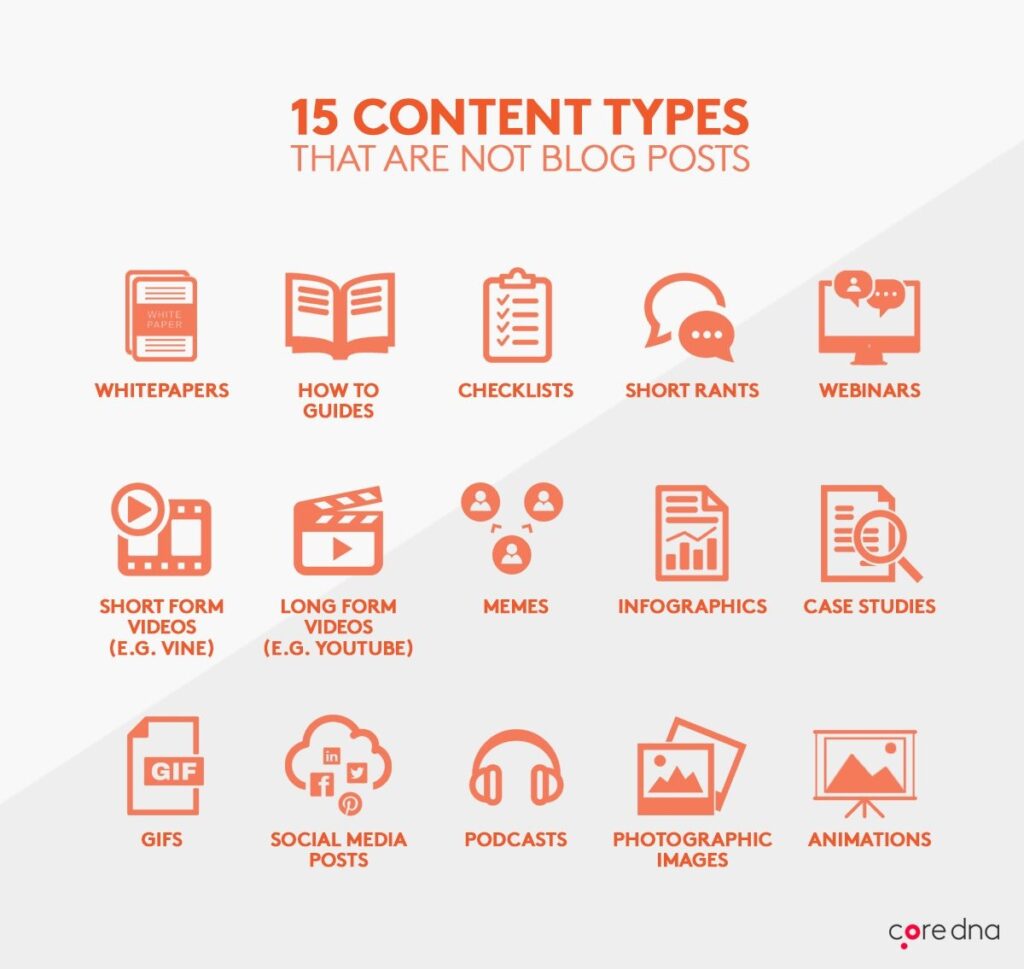
Blog Posts
This right here is a blog post! Blog posts can go on your or another business website online.
They make for a great read, giving detailed summaries or insights into topics. The length of the blog post will depend on whether your readers prefer a longer or a shorter read. You can experiment and keep your blog posts somewhere between 1000-3000 words.
Videos
Visual marketing is skyrocketing as users want information in the form of short multimedia content pieces instead of long articles.
Videos capture the user’s attention immediately. It also gets shared more often than blogs. In fact, HubSpot’s research found it 40X more likely to be shared on social media! All in all, a great content tool to improve SEO!
Social Media Posts
Apart from your website, you can also repurpose or provide original content for social media channels. You are bound to find a larger market as 53.6% of the world’s population are social media users.
Some popular platforms businesses can use include Facebook, Instagram, Pinterest, and LinkedIn.
Infographics
Infographics combine visual and textual elements that users find very compelling. Therefore, you can fit in a great deal of data into images that are easy to understand and entertaining!
You will come across plenty of digital tools and websites to make infographics. For example, Canva, Infogram, and Piktochart are some of the top digital tools.
Case Studies
Case studies are becoming an increasingly popular way to engage in storytelling. It also shows potential leads how a customer was able to solve their problem by working with your organization.
Summing It Up
To sum up, content marketing shows you that it is not about increasing sales but providing an experience through good content.
The content marketing world is fun to explore but requires all your energy and creativity if businesses want to grow. In short, just keep your core principles consistent and leverage reliable data to review and update your strategy as your business grows.
Therefore, make sure to follow the steps given here and use content marketing resources to successfully develop top-notch content!
If you are looking for experts to handle your content marketing strategy and to grow your business organically, reach out to our professionals! In short, leave all your worries regarding content marketing strategy with the experienced professionals at WrittenlyHub.
Frequently Asked Questions
1. Why is content marketing cheap?
Content marketing may not be dirt cheap but it is definitely more affordable than traditional marketing. That’s because you can easily put out content on social media and other digital platforms for free!
Traditional ads only provide one way to reach your audience. On the other hand, the diversity of content strategies allows you to distribute your message through several avenues at once. As a result, you build more customer relationships for lesser money.
2. What is a good content strategy?
A good content strategy aligns with your business goals, identifies your target audience, outlines content topics, sets publishing schedules, and includes SEO optimization. It emphasizes valuable, relevant content that engages and educates your audience while measuring performance to adapt and improve.
3. How is content marketing changing the game?
Content marketing is evolving with new formats like video, interactive content, and AI-driven personalization. It’s becoming more customer-centric, focusing on building trust, and offering tailored experiences. Data-driven insights are shaping strategies, making it more effective in reaching and engaging audiences.
4. How to start content marketing for your business?
Start by defining your goals, understanding your audience, and conducting keyword research. Create a content calendar, develop high-quality content, and promote it via social media and email. Monitor results, adjust your strategy, and continue to produce valuable content to build your online presence.
5. How long does content marketing take to work?
The timeline for content marketing success varies, but it usually takes several months to see significant results. Building trust and authority with your audience, improving search rankings, and generating leads or sales all require consistent effort and patience. The key is to stay committed and adapt as needed.



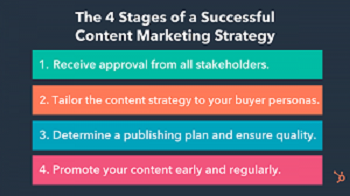
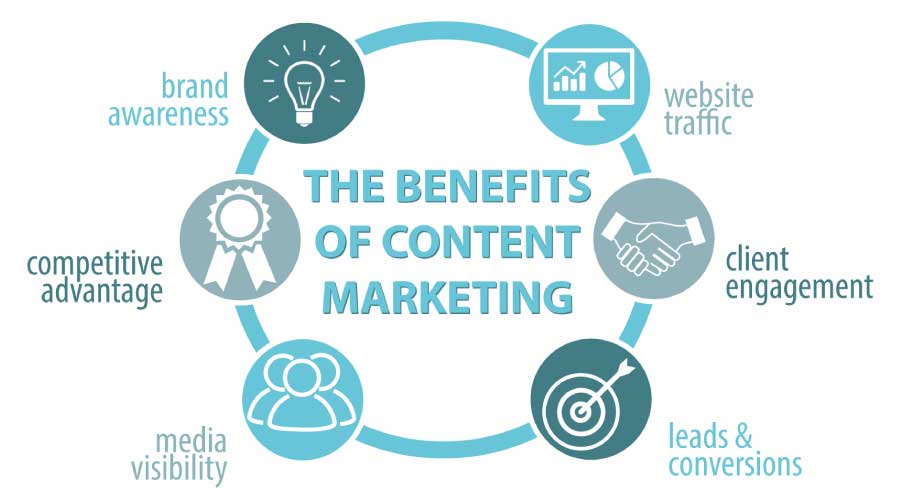
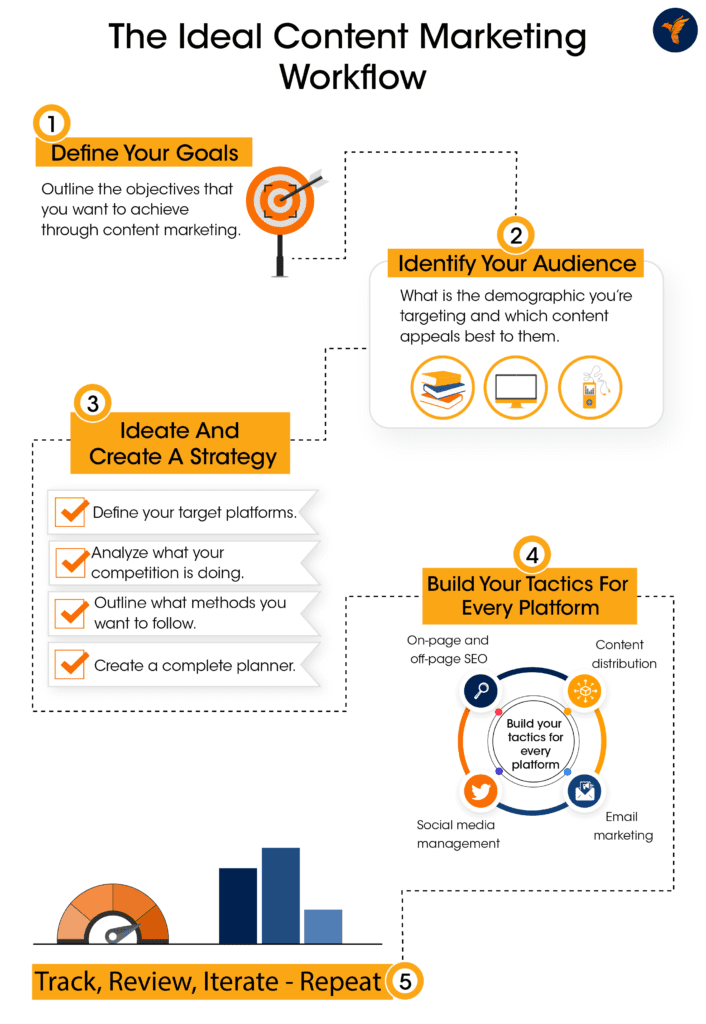












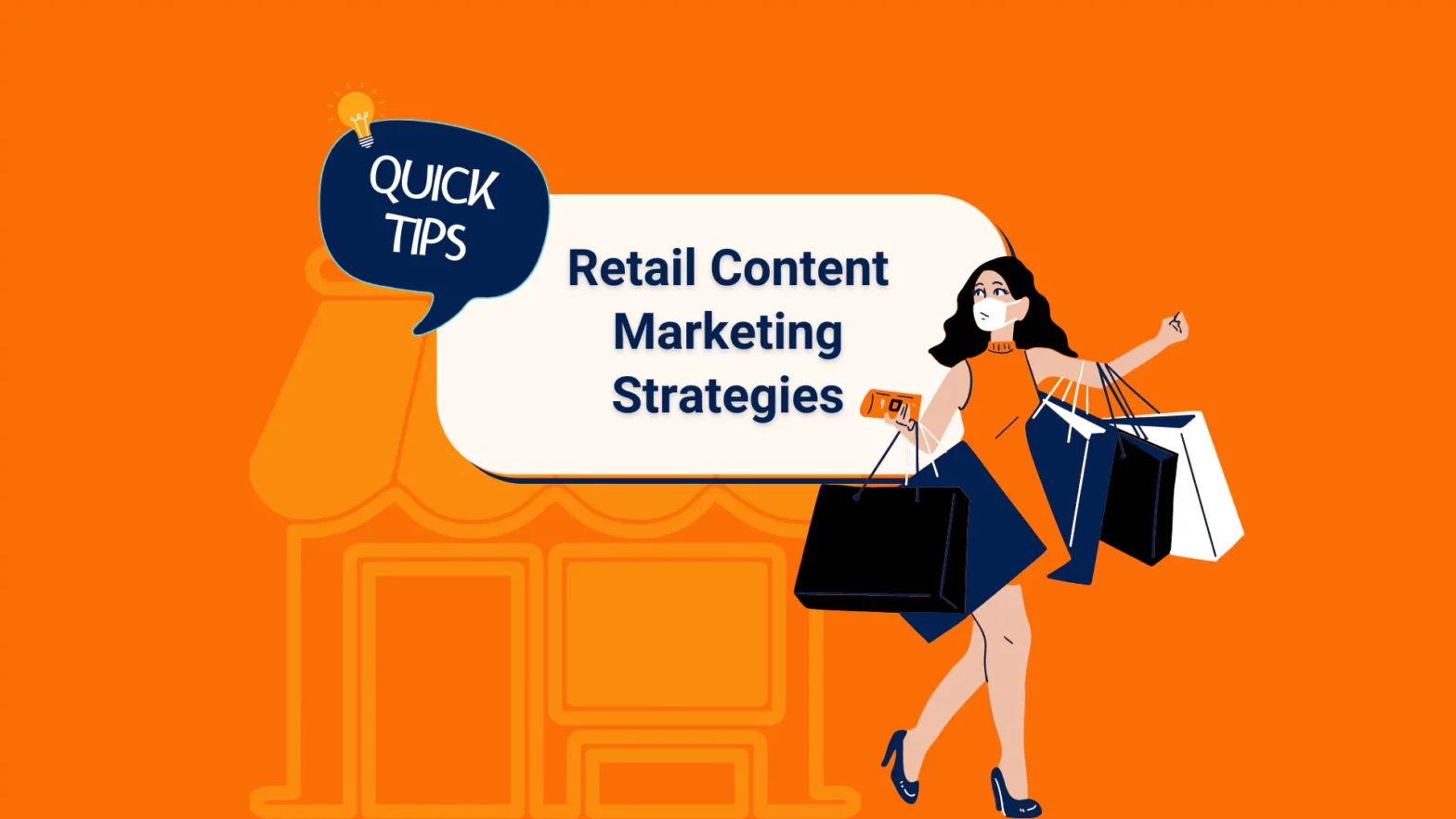








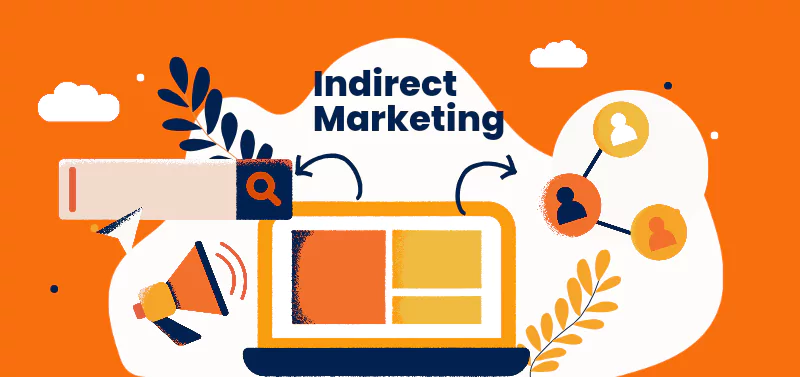





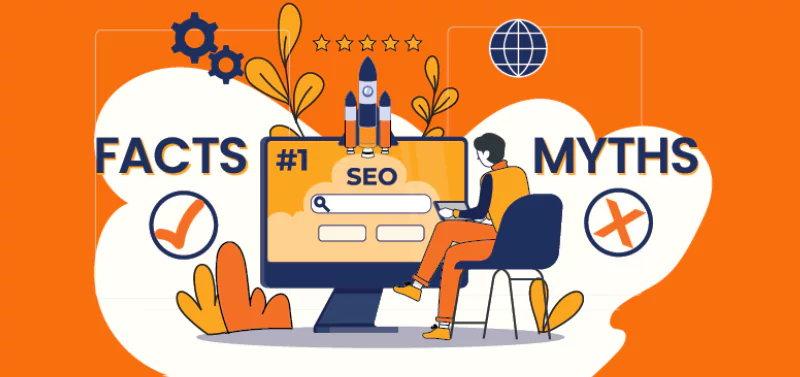

















































































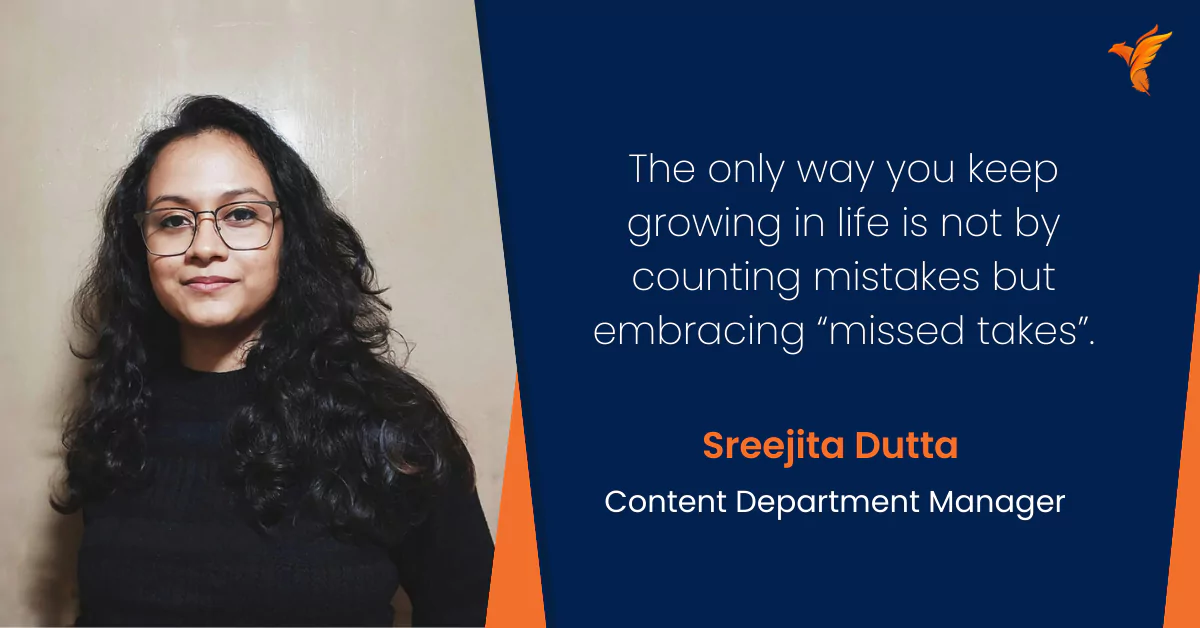

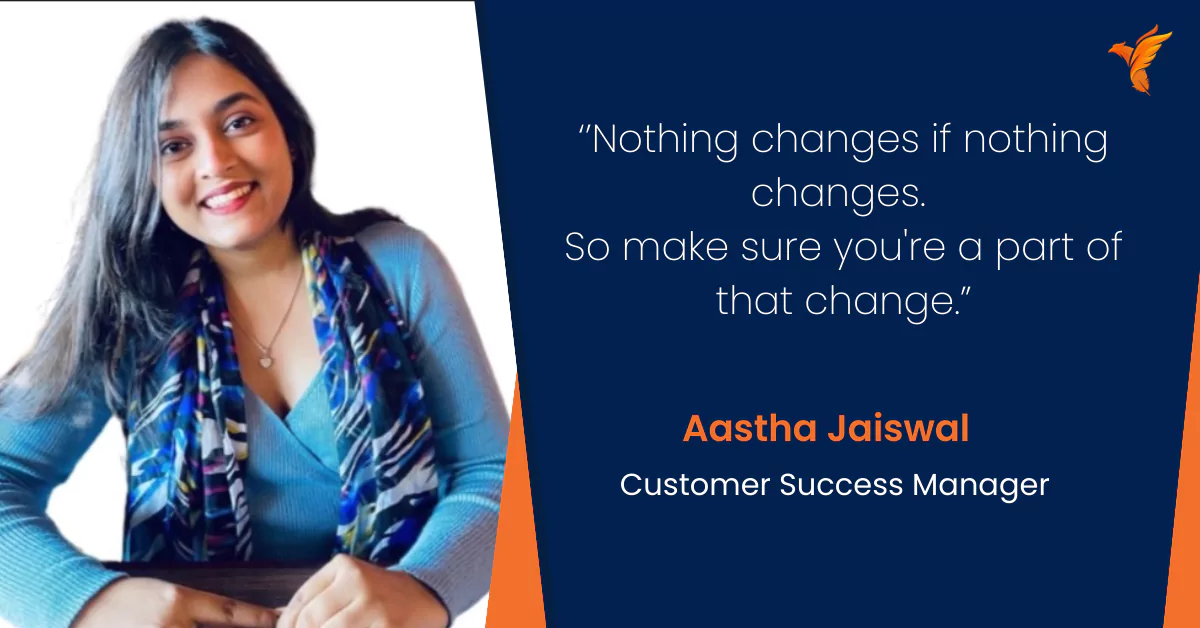






[url=https://ribalka.me/snasti/snasti-dlya-zimney-rybalky/]снасти мастера интернет магазин зимней рыбалки кивки[/url] – какую леску использовать для поводка фидера, фидер поводок лещ
This [url=https://goo.su/Nz6Avr]mature fuck tube[/url] will leave you breathless
Hi… If you interesting, this is a Best design sauna in Europe https://europa.kiev.ua/spa/ or [url=https://europa.kiev.ua/spa/]сауна в киеве[/url]
[url=https://biepro.in/veh%C3%ADculos.html]продажа авто и мототехники в Эквадоре[/url] – venta de autos en Ecuador, venta de autos en Ecuador